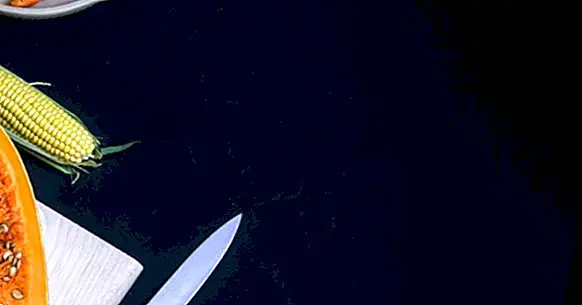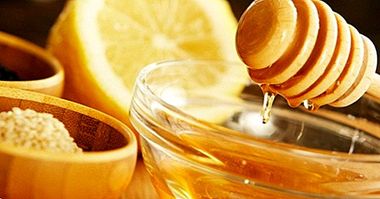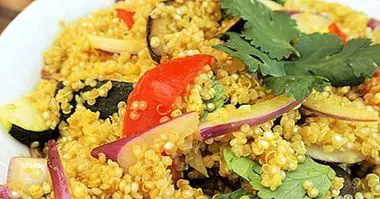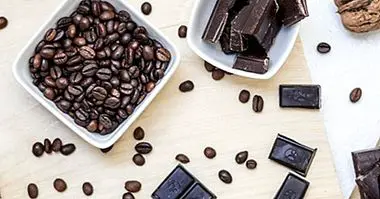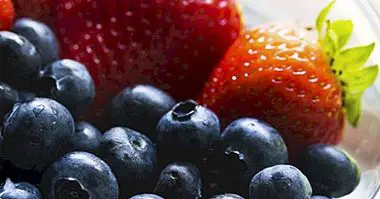Astringent diet: how to carry it out and benefits
There are different types of diets, and most people associate them with the weight loss process. But not all have that function, nor are all diets healthy. One of the diets that aims to improve our wellbeing and our stomach health is the astringent diet , designed to reduce the symptoms of diarrhea.
The astringent diet is recommended in cases in which a person suffers from diarrhea, regardless of the origin: transient, enteritis, Crohn's disease or secondary to intestinal surgical interventions. In this article we are going to talk about this diet and we are going to delve into its characteristics.
What is the astringent diet
The astringent diet is a diet that aims to take care of the digestive system when someone suffers stomach upset or diarrhea.
Basically, with this diet, the subject includes in his diet some foods that are easy to digest and with which the body does not need excessive energy to process them, in addition to foods with a high content of minerals and vitamins, which do not contain much fiber and which help to retain liquid. It is a useful diet for any age, including children and the elderly.
What causes diarrhea
Everyone, at some time in our lives, has suffered diarrhea, that is, when we have a greater need to go to the bathroom to defecate, often unable to control the deposition of excrement, which have little consistency (are not very solid). Diarrhea can last from one day to two or three weeks in the case of acute diarrhea, and up to several weeks in the case of chronic diarrhea.
This condition, which is usually a symptom rather than a disease, has different causes. They are the following:
- Some parasites , as for example, those that cause giardiasis and amebiasis.
- Virus . Among which are the enterovirus, or the hepatitis virus.
- Distantis infections , either by the intake of food (or water) or by contamination from person to person.
- Bacteria . Some of the best known are: salmonella, shigella, clostridium E.coli.
Some medical conditions that do not include infection are:
- Irritable bowel syndrome
- Celiac Disease
- Lactose intolerance
- Inflammatory diseases of the intestine. For example: ulcerative colitis or Crohn's disease
- Small bowel surgery
- Pancreas problems, for example, cystic fibrosis
- Ischemic bowel disease
- Surgical removal of the gallbladder
- Certain diseases of the endocrine system. For example: overactive thyroid, diabetes or Zollinger-Ellison syndrome
Recommendations for the astringent diet
Some recommendations to follow this diet are:
- At meals, the amount to be consumed should be small.
- Eat more often. For example, 5-6 meals a day.
- Drink plenty of liquid, in small drinks, to avoid dehydration. A good option is to take broths without fat.
- Avoid foods rich in fiber
- Eat in a relaxed way to promote digestion.
- Avoid very hot or very cold foods
- Do not consume foods that cause gas.
- The food must be varied.
Phases of the diet against diarrhea
When someone consumes this diet, the stools become progressively harder and, therefore, we must adapt the diet to the degree of improvement. Because, This diet consists of four phases .
1. Phase zero
This is the initial phase, in which solid foods are not consumed . In the case of children, approximately lasts 4 hours, in the case of adults, the first 12 hours. In this phase there is a great loss of minerals and liquids, so it is essential to consume special drinks or beverages with salts (for example, a packet of dissolved sodium hypoalcohol or medicines to recover minerals).
It is also possible to boil a liter of boiled water, add juice of 2-3 lemons, half a tablespoon of baking soda, half a teaspoon of salt and 2-3 tablespoons of sugar. Also, tea, chamomile, rice water, carrot water are ideal.
2. Phase two
After the previous phase, It is possible to incorporate other foods, such as boiled rice, potato and boiled carrot , boiled pasta without boiled fish, boiled chicken, baked apple, et cetera.
3. Phase three
In the third phase of the astringent diet, the foods that favor recovery are: vegetable puree (zucchini, carrot, beans, squash), fruit juices, boiled vegetables and legumes, rice, chicken or boiled fish, toasted white bread.
4. Phase four
The fourth phase consists of Progressively introduce complex foods until a normal diet is consumed . For example, banana, boiled vegetables, grilled meat or fish, 0% fat yogurt, decaffeinated coffee, fresh cheese without fat, etc.
What foods should be avoided
There are a number of foods that should not be consumed as part of this diet, at least during the first phases . Progressively, it is possible to introduce some foods into the diet, once the improvement is evident. High-fat foods are not at all positive for this type of diet, as are foods rich in fiber.
Nor are the industrial sweeteners found in soft drinks or highly digestible vegetables such as garlic, raw onion or peppers. Chocolate, alcohol, fried foods, red meat, butter should not be eaten. Dairy products should not be consumed either, at least until the fourth phase and always in their fat-free versions.
When should we not do this diet
The astringent diet is not a diet that can be harmful; however, when there is no need to perform it (as there are no stomach problems or diarrhea) it will not be useful. However, When a person has constipation, it is not advisable to perform the astringent diet since it would enhance this condition and, therefore, constipation increases.

